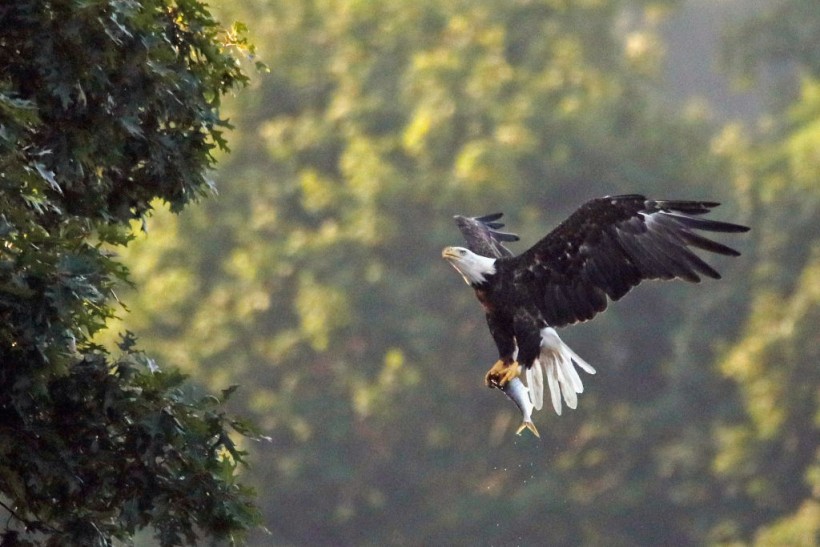A new study showed that most bald eagles and golden eagles across the United States are exposed to high levels of lead chemicals from hunter's ammunition.
The study claimed that the presence of the chemical on these eagles, of this magnitude, can suppress their population growth in North America.
Lead poisoning of the two eagle species starts when these birds ingest residual lead fragments from ammunition found in the carcasses of dead animals-after being shot by hunters using rifles and shotguns.
The study's findings may likely raise further concerns from environmentalists and conservationists in the future; since the usage of ammunition containing lead is still widely common when hunting in the wild across the US.
Lead Chemicals from Ammunition

Since the dawn of industrialization, the chemical and abundant element lead has been used widely in the manufacturing industry to create various materials.
One of these materials is manufactured into lead ammunition-which is commonly used for wildlife hunting over the past centuries.
In some instances, hunting outdoors often causes lead poisoning of wildlife; wherein one of the most common victims are birds.
Birds are contaminated with lead when they eat an animal's carcass which contains lead fragments after being shot dead by hunters.
If lead production continues, there will be approximately 1.9 million tons of the chemical released in the environment in the next two decades, according to the European Chemicals Agency (ECHA).
Furthermore, the ECHA added that residual lead fragments from ammunition may also affect people's health.
Also read: Reports Showed that Once Going Extinct Bald Eagle Population Quadrupled Since 2009
Lead Poisoning on Bald and Golden Eagles
The new study was published in the journal Science on Feb. 17-where researchers analyzed lead levels from 1,210 eagles across 38 states in the US. In their examination, they found that more than 50% of the adult bald and golden eagles had lead concentrations in their bones.
Pathologists defined this as chronic lead poisoning. Lead poisoning is slowing the population growth rate of both bald and golden eagles, according to Vincent Slabe, a wildlife biologist at Conservation Science Global and a co-author of the study, as cited by National Geographic.
Furthermore, Slabe added that acute poisoning can kill the eagles. For instance, the poison can immobilize them and lead to death due to starvation. Additionally, exposure to lead can also impair their vision, reduce sperm quality, disrupt digestion, and lower their immune system.
The Bald and Golden Eagle Protection Act
There have been calls from conservation and environmental groups to the US government to create actions and policies to protect the bald and golden eagle species. Some of these requests pertain to regulating hunting practices, including switching from lead ammunition into copper ammunition.
In spite of the existing law concerning the said eagles, known as The Bald and Golden Eagle Protection Act (16 U.S.C. 668-668c) and enacted in 1940 in the US, the population of the eagles is still at risk, according to the U.S. Fish and Wildlife Service.
The US agency mentioned that, under the law, unauthorized activities on bald or golden eagles are illegal. These activities include killing, injuring, capturing, exporting, or importing. The law also covers prohibition in disturbing the eagle's habitat.
Related article: Fishermen Save Bald Eagle from Octopus' Wrath
© 2024 NatureWorldNews.com All rights reserved. Do not reproduce without permission.




![Roundworms with Short Memories 'Stop Forgetting' When Frozen or Given Lithium [Study]](https://1471793142.rsc.cdn77.org/data/thumbs/full/70295/280/157/50/40/roundworms-with-short-memories-stop-forgetting-when-frozen-or-given-lithium-study.jpg)
